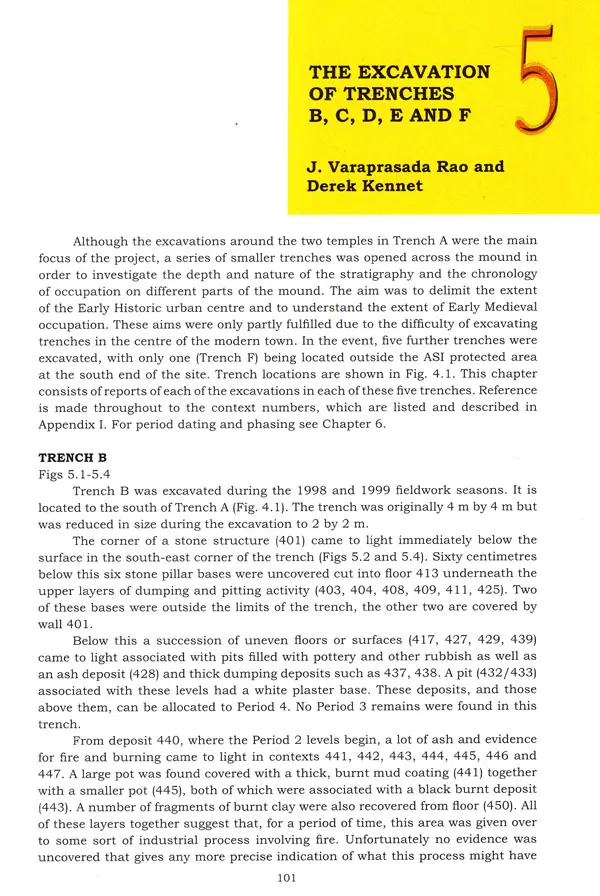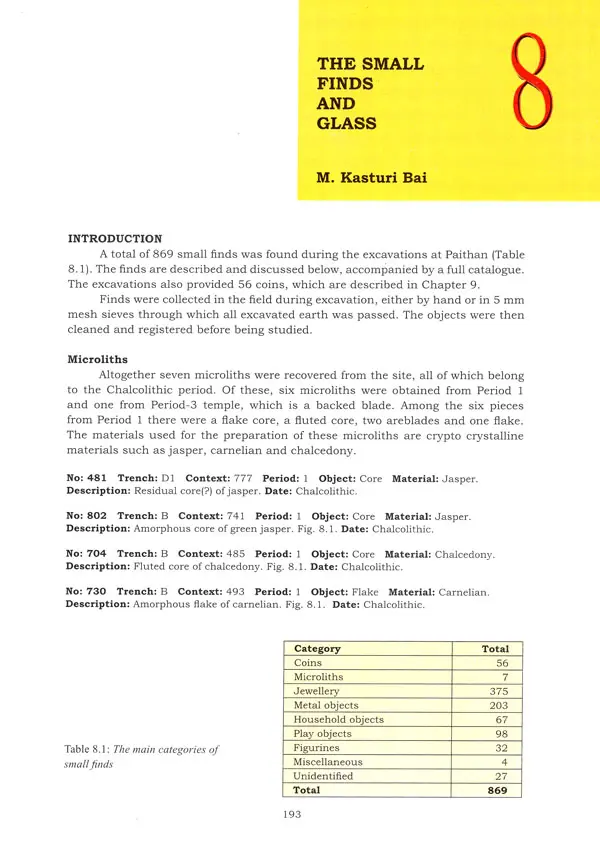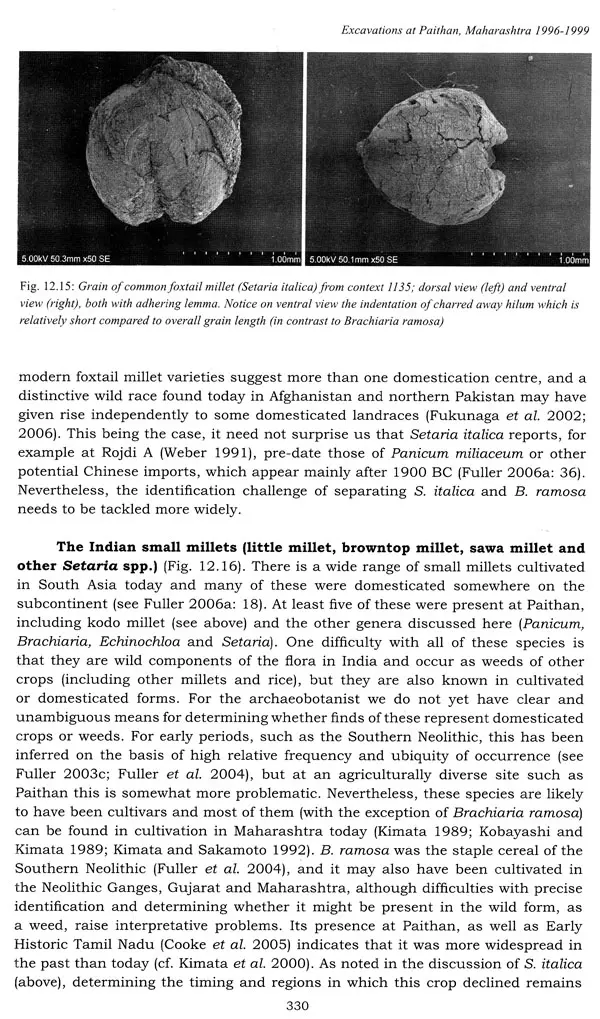
Transformations in Early Historic and Early Medieval India- Excavations at Paithan, Maharashtra (1996-1999)
Book Specification
| Item Code: | UAL954 |
| Author: | Derek Kennet, M. Kasturi Bai and J. Varaprasada Rao |
| Publisher: | ARCHAEOLOGICAL SURVEY OF INDIA |
| Language: | English |
| Edition: | 2019 |
| Pages: | 456 (Throughout Color and B/W Illustrations) |
| Cover: | HARDCOVER |
| Other Details | 11.00 X 9.00 inch |
| Weight | 2.13 kg |
Book Description
The Early Historic to Early Medieval transition is a key formative period in India's history. This is particularly true in terms of the emerging economic and political role of temples, the nature of urbanism, the role of Brahmins and the emergence of Hindu kingship, but also in relation to broader debates about transformations in economy and society. In recent years the study of this transitional period has itself undergone significant transformation amongst historians (e.g. Chattopadhyaya 1994; Kulke 1995b; Bakker 1997; Willis 2009; Bronkhorst 2011). At the same time it has been notable that-aside from the debate about late Early Historic urban decline (Sharma 1987)-the archaeological contribution to our understanding of the transition has been relatively thin. It was a keen awareness of this point, as well as a clear vision of the potential that archaeological evidence has to address many of the key issues that surround the transition, that drove the two directors of the present project (J. V. P. Rao and D. Kennet) to steer the Paithan excavation project in this direction when they jointly took it over in 1998. However, before going into the details of the research aims and objectives that formed the underlying rationale of the present excavations, it may be useful to provide a short background to the study of the Early Historic/Early Medieval transition in order to set out the research context.
The traditional scholarly view of Indian history that had emerged by the early 20th century divided India's past into 'ancient, medieval' and 'modern' periods, effectively replicating the older scheme of Hindu', Islamic' and 'British' that had been developed by 19th century Orientalists. Within this 'ancient medieval modern' conceptualisation of history, the transition from ancient to medieval was seen as marking the end of a glorious age of ancient empires and the beginning of a degenerative medieval period during which the great Mauryan and Gupta empires fragmented into numerous regional kingdoms. These epochal changes were generally perceived as being accompanied by the decline of philosophical traditions and the degeneration of classical, naturalistic art styles into more stylised, ornamental forms alongside the emergence of more populist forms of religious worship.
After independence and into the 1960s a more analytical and critical approach to Indian history emerged with a closer focus on economic and social issues, particularly amongst Marxist historians. This approach was based on the view that the ancient empires were highly centralized, that they incorporated numerous, large urban centres and were based around a highly monetized economy in which manufacture and trade were very significant. It was argued that these structures came to an end during or after the Gupta period at which time manufacturing and the minting and circulation of coins dwindled whilst urban centres declined in size and wealth. These changes were accompanied by a proliferation of copper-plate inscriptions recording royal grants of land to temples and Brahmins, reflecting-it is argued the decreasing significance of coinage. A number of scholars argued for the development of feudal economic and political structures in India at this time. partly on the basis that land grants were indicative of the decline of centralized political power that was reflected in the emergence of smaller, localised medieval kingdoms.
There is no doubt that the emphasis on the study of economic and social history was one of the most important innovations of this phase in Indian historiography. At the same time, the notion of a period of feudalism in Indian history continued to be widely debased through the 1960s and 1970s. By the 1980s, however, much of the evidence on which this argument was based had been challenged by scholars (1974), B. D. Chattopadhyaya (1986) and R. Deyell (1990) and it is fair to say that the idea has now largely lost currency amongst scholars, at least as a formal concept. At the same time, other scholars began to question the level of centralization and cohesion of the Early Historic states such as the Mauryan empire, bringing into doubt the very starting point from which early medieval formatinos are supposed to have developed.
**Contents and Sample Pages**
















